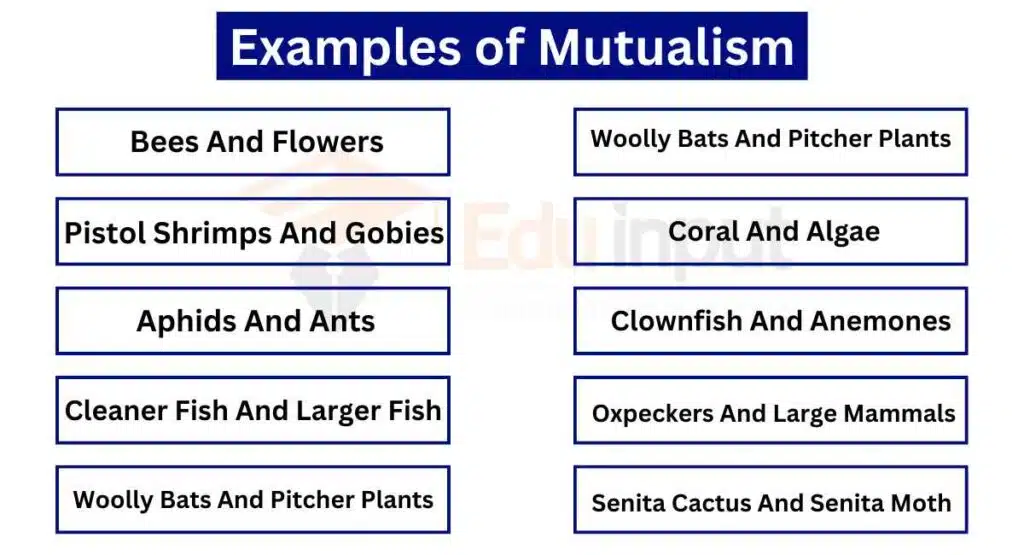Examples of Mutualism
Mutualism is a form of symbiotic relationship where two or more organisms from different species interact in a way that benefits each participant.

10 Examples of Mutualism
Here are some most common examples of mutualism in different organisms:
1. Bees And Flowers
Bees collect nectar from flowers as a food source, while inadvertently transferring pollen from one flower to another, aiding in the flower’s reproduction. The flowers provide the bees with nectar, and the bees inadvertently assist in pollination.
2. Pistol Shrimps And Gobies
True gobies and pistol shrimps form mutualistic relationships. Pistol shrimps dig and maintain burrows in the seafloor, which they often share with gobies. The gobies act as “lookouts” for the shrimp, warning them of potential predators. In return, the shrimp provide shelter for the gobies, and both species benefit from each other’s presence.
3. Aphids And Ants
Aphids small sap-sucking insects, secrete honeydew as a waste product. Certain species of ants “milk” aphids by feeding on their honeydew. In return, the ants protect the aphids from predators and parasites. Some ants even move aphid eggs and nymphs to their nests, creating a more efficient honeydew source.
4. Cleaner Fish And Larger Fish
Cleaner fish, such as cleaner wrasses, clean parasites and dead skin off larger fish. The cleaner fish benefit by obtaining food, while the larger fish benefit by having parasites removed.
5. Woolly Bats And Pitcher Plants
Woolly bats roost in pitcher plants, specifically Nepenthes hemsleyana found in Borneo. The bats get a safe roosting spot, while their guano (feces) provides nutrients for the pitcher plant’s survival. The plant benefits from the bat’s waste, completing a mutualistic relationship.
6. Woolly Bats And Pitcher Plants
Woolly bats roost in pitcher plants, specifically Nepenthes hemsleyana found in Borneo. The bats get a safe roosting spot, while their guano (feces) provides nutrients for the pitcher plant’s survival. The plant benefits from the bat’s waste, completing a mutualistic relationship.
7. Coral And Algae
Reef-building corals have a mutualistic relationship with zooxanthellae algae. The algae live inside the coral’s tissues and undergo photosynthesis, providing the coral with essential nutrients and oxygen. In return, the coral provides shelter and nutrients for the algae.
8. Clownfish And Anemones
Clownfish and anemones have a mutualistic relationship. The clownfish find refuge among the anemone’s tentacles, which protects them from predators. The fish also help keep the anemone clean by consuming parasites and providing nutrients through their waste. The clownfish’s movements may aid in water circulation for the anemone.
9. Oxpeckers And Large Mammals
Oxpeckers, a type of bird, often perch on large mammals such as rhinos or zebras. They feed on ticks, fleas, and other parasites found on the mammals’ skin, providing the mammals with relief from these parasites.
10. Senita Cactus And Senita Moth
The senita moth is the only nocturnal pollinator of the senita cactus. The female moth collects pollen on her body and transfers it from flower to flower, aiding in the cactus’s pollination. The moth also lays eggs on the flower petals, and when the larvae hatch, they feed on a portion of the developing fruit, allowing the cactus to continue prospering.



Leave a Reply